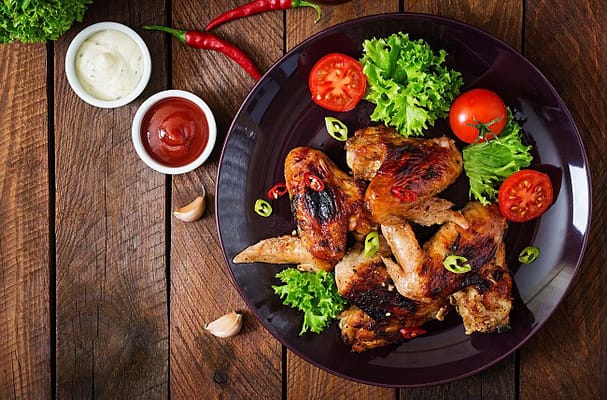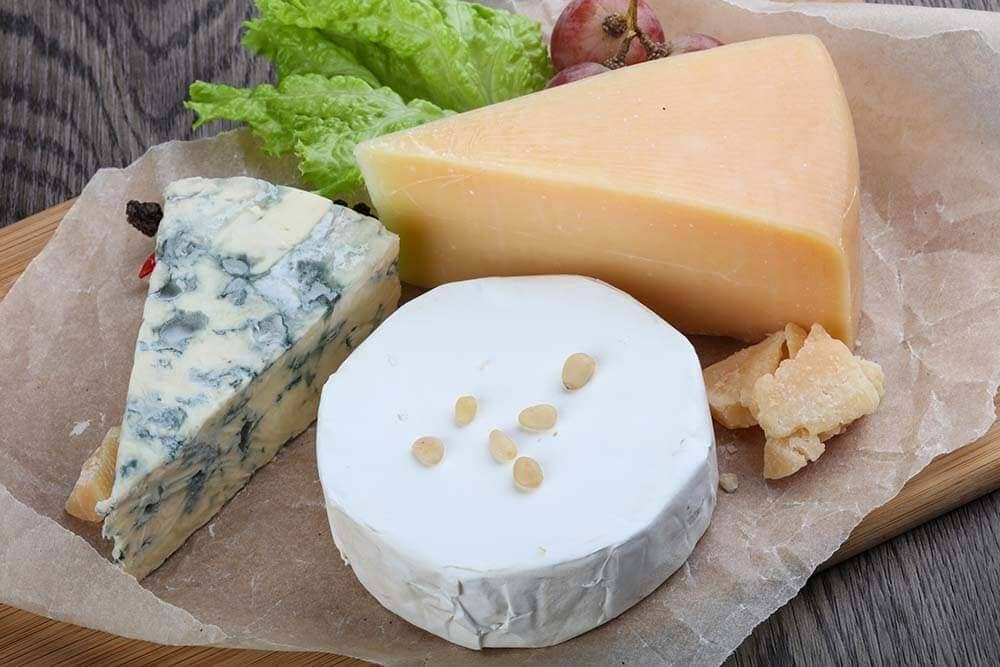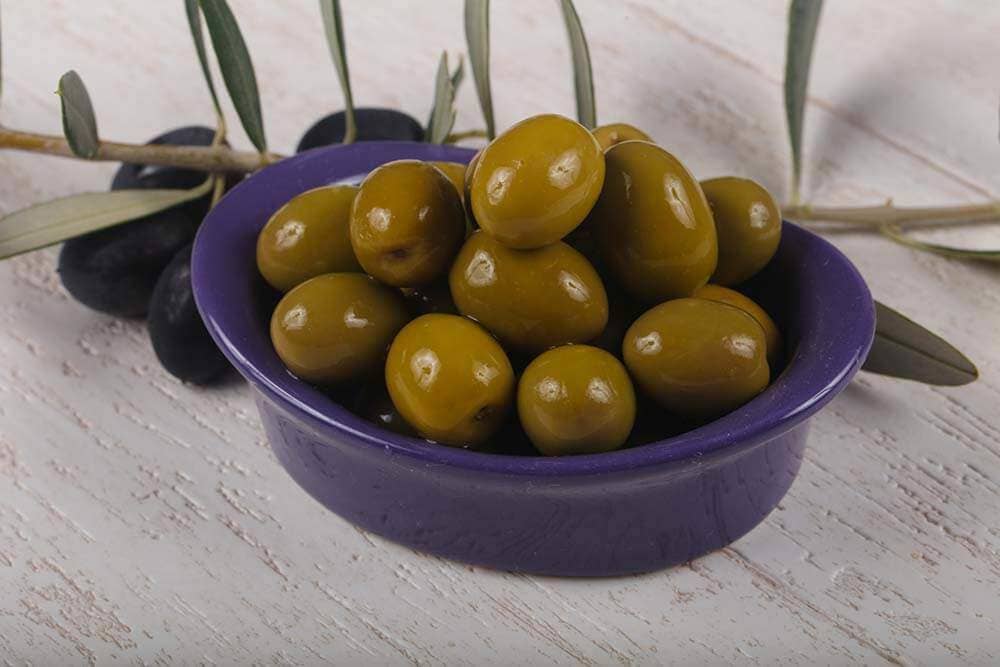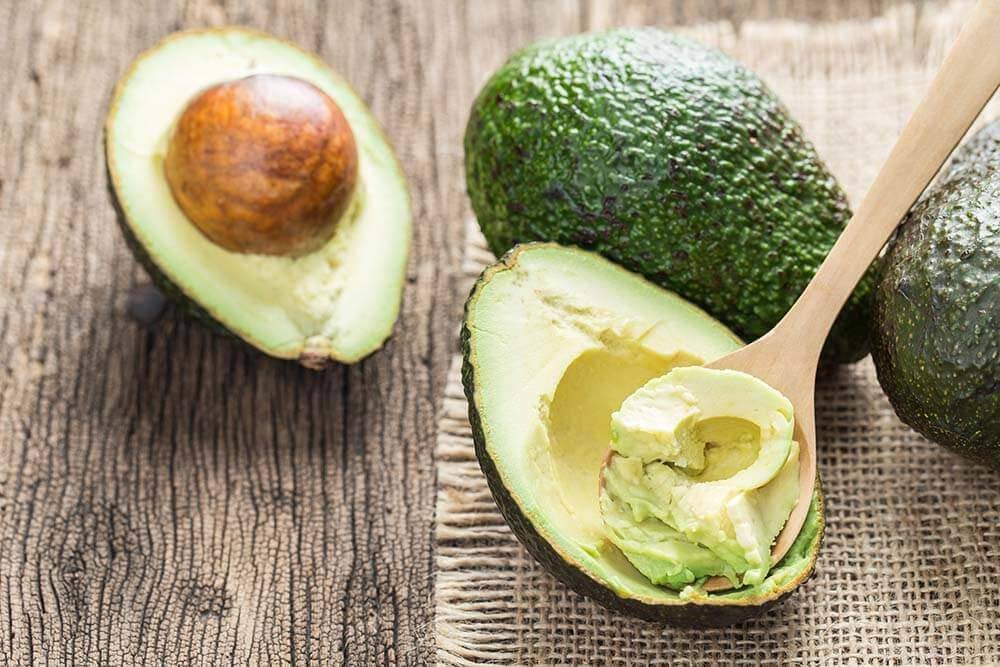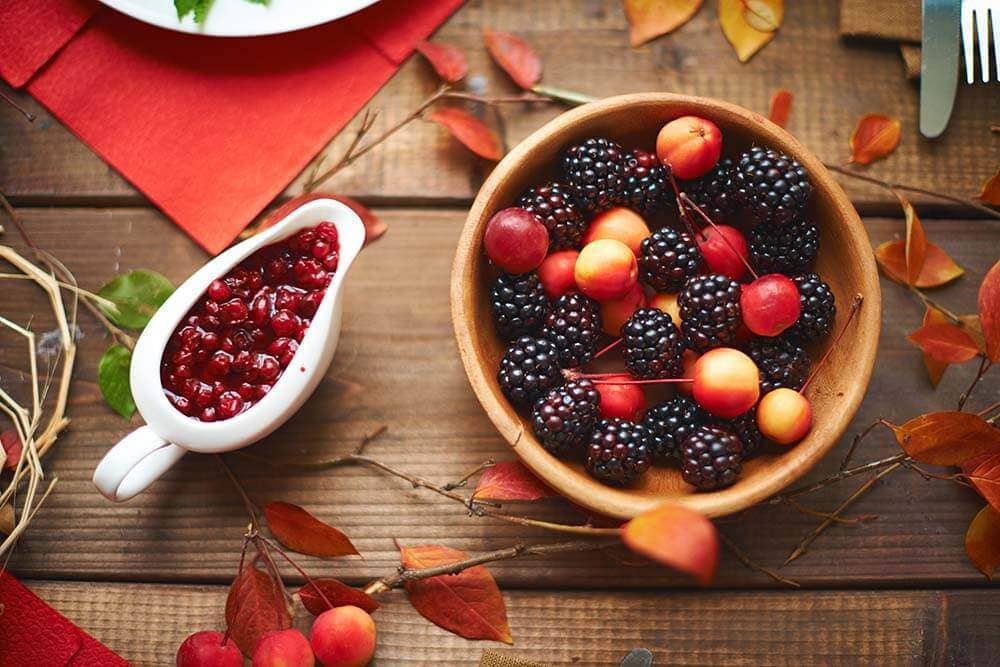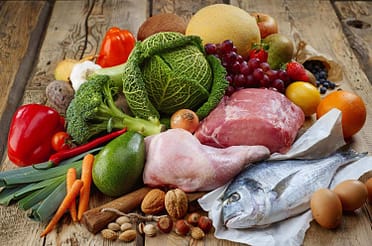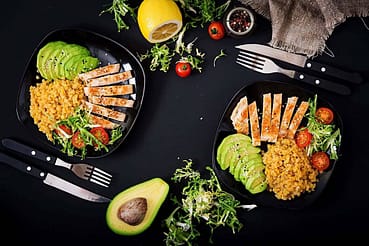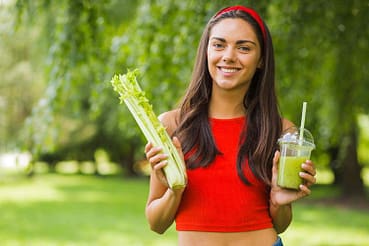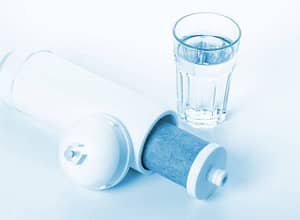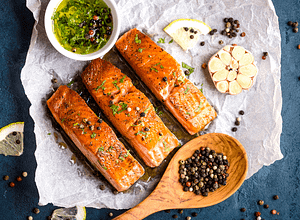So, what is a keto diet?
The ketogenic diet works for many people as it can target many of the underlying reasons for weight gain.
This includes increased blood-sugar levels, hormonal imbalances, particularly insulin resistance, and the cycle involved in either restricting or “binging” on calories that are empty caused by hunger which so many people on a diet struggle with.
This is not an issue when it comes to the food list on the keto diet.
When you make the transition, your body reaches a state known as “ketosis” which means your body turns into a “fat burner” as opposed to a “sugar burner.”
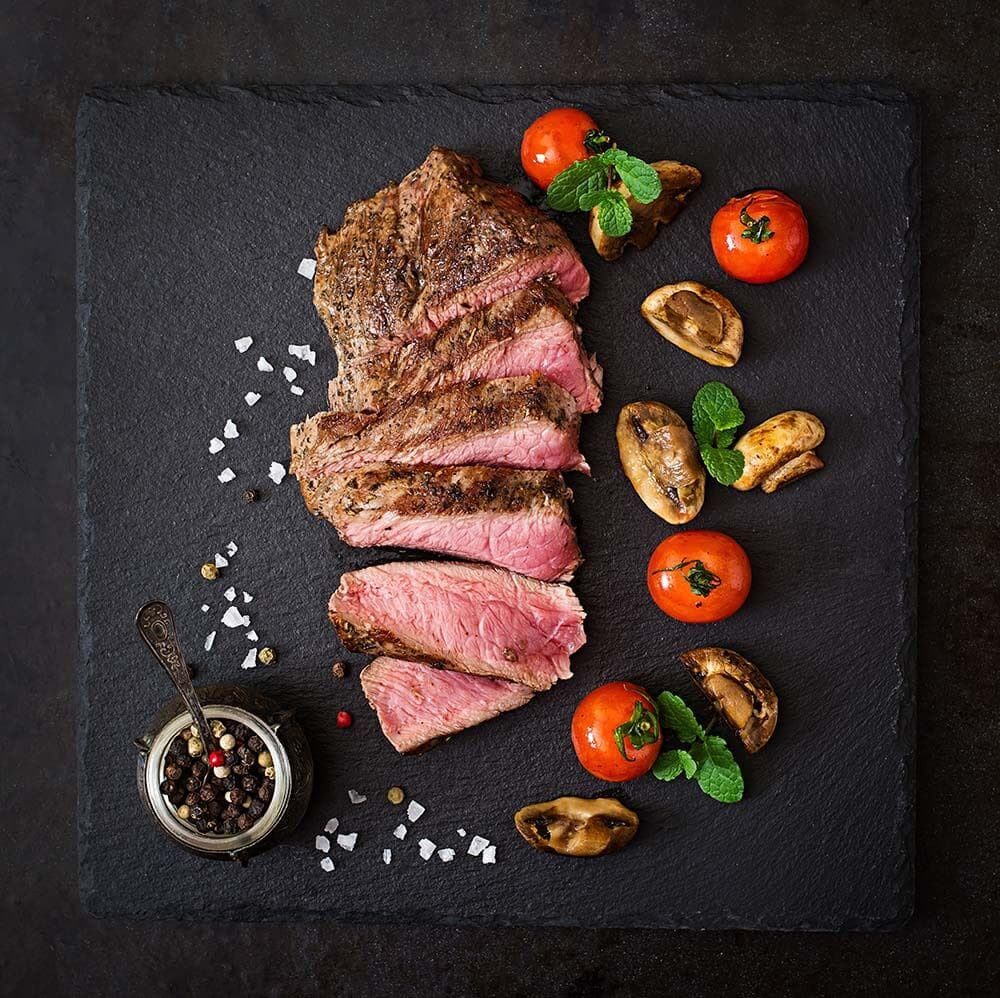
Let’s see what is the keto diet, and the steps to achieve these goals are simple:
- Reduce carbs.
- Increase the consumption of healthier fats.
- When there is no longer glucose flowing into your body, the body automatically starts to burn off fat as well as producing ketones.
- As soon as the blood-levels associated with your ketone have reached a specific point, your body enters into a state of “ketosis.”
- The “ketosis” state results in reasonably fast and consistent weight loss, until your body has reached a stable and healthy weight.
1) Things you are allowed to eat on the keto diet
You may be wondering what keto food is and what is keto diet? What do keto meals look like?
Below are a few examples of low-carb, high-fat foods featured on the food list for the keto diet, that you will be eating a lot of when you follow a ketogenic diet:
- Each keto meal needs to contain higher healthy fat amounts, which should make up around 80% of your overall calories. This can include grass-fed butter, seeds, some nuts, palm oil, coconut oil and olive oil. Fats form an essential portion of each keto recipe as fat is what prevents hunger, fatigue, weakness and provides energy.
- Each ketogenic meal also requires a variety of vegetables that are classified as non-starchy. What type of vegetables are you allowed to eat on a keto diet without having to worry about increasing the carbs you consume by too much? The more popular options include zucchini, cucumber, asparagus, leafy greens, broccoli along with other types of cruciferous vegetables.
- Other food types in moderate amounts include foods which have high protein levels, with either no or very low carbs. These include cage-free eggs, grass-fed meats, bone broth, pasture-raised poultry, organ meats, wild-caught fish, and specific raw, full-fat dairy products.
When it comes to the food types you need to avoid consuming on the low-carb, keto diet are probably the same types you were previously or are used to when it comes to obtaining the majority of your calories on a daily basis, before you change to this method of eating.
These items include processed foods, fruit, high-sugar drinks, foods made from all types of grains such as wheat or white flour, desserts, conventional types of dairy products, along with a variety of high-carb foods, particularly the type sourced from “empty calories.”
2) The food list for the ketogenic diet
The major shift when it comes to your daily habits is associated with the way you shop for food and how you will cook these meals.
Also, the recipes which are keto have to be followed as opposed to just being low-carb. You will need to eat healthy fats with every meal so that your body can reach ketosis along with obtaining sufficient energy without eating carbs.
You will also be a lot healthier and energetic when you prepare your keto meals as opposed to buying the “so-called” keto foods from the shelf of a supermarket.
Visit my page to find all the keto recipes that you need along with keto snacks which includes the fat bombs, and how to begin on your keto meal plan.
3) What is a keto diet: an overview of the ketogenic diet plan
- The recommended ratio of macronutrients which includes grams of fat vs. carbs vs. protein for your diet will vary depending on your current state-of-health and specific goals. Your body composition, activity levels, gender, and age, will also contribute to deciding on your fat versus carb intake.
- Traditionally the ketogenic diets involve limiting carb intake to only 20-30 net-grams each day. The “Net Carbs” is the number of carbs that remain once the dietary fiber has been accounted for. Fiber is something that cannot be digested; most people won’t count the fiber towards their carb allotment daily. What this means is that the Total Carbs minus the Grams Of Fiber is equal to the net carbs. This is the carbohydrate count that matters the most.
- On the standard “strict” keto diet, the fats usually provide around 70 to 80% of your daily calories, carbs around 5%, and protein between 15 and 20%. The more “moderate” approach to a keto diet is the better choice for most people as the transition is more natural into the extremely low-carb way of eating and offers more flexibility.
- One difference about the keto diets in comparison to most of the low-carb diets has to do with that it does not focus on protein loading. In fact, fat is a much more important part of these diets rather than protein. The reason for this is that even in smaller amounts the body quickly converts the protein you eat into glucose. This means if you are overeating protein, to begin with, especially in the early stages of your diet, it will slow down how fast your body transitions into ketosis.
- Ideally, your protein intake needs to between 1 and 1.5 grams for every kilogram based on your goal weight. If you need to convert pounds into kilograms, you need to divide your goal weight by 2.2. An example of this is a woman that weighs 150 pounds, which is 68 kilograms, should be eating between 68 to 102 grams protein on a daily basis.
- It is equally important to be drinking enough water. The right amount of water assists you in preventing fatigue and is essential for aiding in digestion as well as suppressing hunger. Water is also required for detoxification. You should be drinking at least 10 to 12 glasses of water every day.
4) The ideal keto foods:
Low-carb and high-fat foods you can eat whenever you want:
Healthy fats
The best healthier fats contain zero carbs, particularly the type in the list below, which comes with some health benefits.
These fats need to be included in each meal in high amounts throughout your day:
- Healthy fats are inclusive of monounsaturated fats, saturated fats, and specific forms of PUFAs (polyunsaturated fats), especially the omega-3 fatty acids. It is suggested to include all these fat types in the diet, but the emphasis on saturated fats.
- Olive oil, MCT oil, palm fruit, cold-pressed coconut, avocado oil, and macadamia oil all contain no net carbs per tablespoon. Check out some MCT oil products and use iHerb new customer discount for 5% off.
- Ghee and butter – zero carbs for each tablespoon.
- Duck or chicken fat and lard- zero carbs for each tablespoon.
Protein
The animal proteins which include fish, meat, etc., have minimal or no carbs. You can eat meat in moderation when needed to suppress hunger.
It is best to choose the fattier meats over, the leaner ones. An example of this is selecting a chicken thigh over a chicken breast as the thigh contains more fats.
- Grass-fed beef along with other fatty meat cuts such as venison, veal, goat, lamb, and other types of games. The fatty grass-fed meat is preferred as it contains higher quality omega-3 fats and 0 grams of net carbs for every 5 ounces.
- The organ meats that include liver which is around 3 grams of net carbs for every 5 ounces.
- Poultry that includes duck, goose, hen, pheasant, turkey, quail and chicken, contains 0 grams of net carbs for every 5 ounces.
- Egg yolks and cage-free eggs contain 1 gram of net carbs for each.
- Fish that includes sardine’s tuna, salmon, trout, mackerel, anchovies, mackerel, bass, flounder, and more also contain 0 grams of net carbs for every 5 ounces.
Non-starchy vegetables
- All the leafy greens that include collards, dandelion, beet greens, turnip, mustard, arugula, endive, chicory, escarole, radicchio, fennel, chard, kale, spinach, sorrel, romaine, etc., typically ranges from about 0.5 to 5 net carbs for each cup.
- The cruciferous vegetables like cauliflower, broccoli, Brussel sprouts, and cabbage contain 3 to 6 grams of net carbs in each cup.
- Leeks, celery, chives, zucchini, and cucumber, contain 2 to 4 grams of net carbs in every cup.
- Most fresh herbs are very close to 0 grams of net carbs for each 1 to 2 tablespoons.
- The vegetable that has a slightly higher carb content include tomatoes, asparagus, wax beans, mushrooms, green beans, bamboo shoots, jicama, bean sprouts, bell peppers, radishes, water chestnuts, and sugar snap-peas contain between 3 to 7 grams of net carbs for each cup of raw veggies.
Fruit that is fat-based
- Avocado contains around 3.7 grams of net carbs for each half.
Snacks
- Turkey or beef jerky contains zero grams of net carbs.
- Bone broth contains no net carbs.
- Hard-boiled eggs contain 1 gram of net carbs for each egg.
- Additional vegetables either cooked or raw with a homemade dressing contain 0 to 5 grams of net carbs.
- ½ an avocado served with sliced salmon includes 3 to 4 grams of net carbs.
- Minced meat that is wrapped in lettuce leaves contains 0 to 1 gram of net carbs.
Condiments
- Herbs and spices have zero grams of net carbs.
- Hot sauces that contain no sweeteners contain zero grams of net carbs.
- Unsweetened mustards contain 0 to 1 grams of net carbs
Drinks
- Unsweetened black tea or coffee, contain no net carbs, make sure you consume these drinks in moderation as they can have an impact on your blood sugar.
- Water contains zero net carbs.
5) Keto foods that you should only be eating occasionally
Full fat dairy
- The dairy products that you eat need to be limited to “now and then” as they contain natural sugars. The high-fat hard cheeses contain fewer carbs, while the soft cheeses and low-fat milk contain a lot more.
- Full fat goat and cow’s milk which should be raw and organic contain around 11 to 12 grams of net carbs in a 1-cup serving.
- The full-fat cheeses contain 0.5 to 1.5 net grams of carbs in around ¼ cup serving.
Medium-starchy vegetables
- Parsnips, sweet peas, beets, artichokes, carrots, and okra contain between 7 and 14 grams of net carbs in a serving of ½ cup of cooked veggies.
- Potatoes and yams, red, sweet and white. The sweet potatoes contain fewer carbs with around 10 grams for a ½ potato, while white potatoes and yams contain a lot more of approximately 13 to 25 grams of net carbs in a ½ cooked yam or potato.
Beans and legumes
- Hummus, lentils, lima, kidney, brown, black, and chickpeas contain around 12 to 13 net grams of carbs per a ½ cup of a cooked serving.
- The soy products that include tempeh, edamame, and tofu can vary significantly in their carb content, so always read the labels. The soybeans contain fewer carbs when compared to other beans with only around 1 to 3 grams of net carbs in a ½ cup (cooked).
Seeds and nuts
- Sunflower, pumpkin seeds, almonds, chestnuts, walnuts, pistachios, cashews, chestnuts, etc., contain around 1.5 to 4 grams of net carbs in an ounce. The cashews contain the highest carb content with about 7 grams in an ounce serving.
- Seed butter and nut butter contain about 4 grams of net grams in a 2-tablespoon serving.
- Flaxseeds and chia seeds contain approximately 1 to 2 grams of net carbs in every 2-tablespoon serving.
Fruits
- Berries that include raspberries, blueberries, blackberries, and strawberries contain between 3 to 9 grams of net carbs in ½ cup serving.
Snacks
- 7 to 10 olives
- Protein smoothies stirred into water or almond milk
- Vegetables topped with melted cheese
- A small handful of seeds or nuts or a tablespoon of nut butter
Drinks
Consume the following unsweetened beverages in moderation and don’t exceed two small servings in a day. These drinks on average contain 1 to 7 net grams of carbs in a serving.
- Fresh fruit or homemade vegetable juices, use less fruit to decrease your intake of sugar aiming for no more than 8 ounces daily.
- Unsweetened almond or coconut milk ideally home-made
- Light broth or bouillon which helps to maintain your electrolytes.
- Water with lime or lemon juice.
6) Never eat the following foods on a keto diet
Any sugar type
Just a teaspoon of any sugar contains around 4 grams of net carbs, while a tablespoon contains about 12 grams.
- Confectioners, raw, cane, brown and white sugar
- Agave and honey
- Syrups such as fruit, caramel, corn, carob or maple
- Any food that contains ingredients like lactose, fructose, dextrose, maltose, and glucose
Any grains
Just a small serving of any grain or 1-slice of bread contains anything from 10 to 30 grams of net carbs.
Cooked grains and cereals usually contain anything from 15 to 35 grams of net carbs in a ¼ cup of uncooked grains or cereals.
- All types of rice, oats, wheat, couscous, pilaf, quinoa, etc.
- Corn and any product that contains corn such as cornmeal, polenta, grits, tortillas, and popcorn.
- Any product that contains flour like pasta, muffins, rolls, bagels, and bread.
Processed foods
- Any type of candy
- Pretzels, chips, crackers, etc.
- Any type of desert-like ice-cream, pies, cakes, and cookies
- Waffles, pancakes and all baked-breakfast items
- Cereals and oatmeal
- Meal replacements, protein bars, granola bars, snack carbs, etc.
- Boxed, canned or prepackaged meals
- Foods that contain artificial sweeteners and artificial ingredients, flavors, and dyes
Caloric and sweetened beverages
- Soda
- Sweetened coffee and tea drinks
- Alcohol, wine, liquor, and beer, etc.
- Dairy replacements and milk
- Fruit juices
Precautions associated with the food list on the keto diet
It is important to know that it is common to experience side effects or adverse reactions when you transition into this “way of eating.”
Some people have been known to experience these symptoms which are known as “keto flu,” that typically goes away within a few weeks:
- Poor sleep;
- Headaches;
- Lack-of-energy or fatigue;
- Muscle pains or weakness;
- Upset stomach, nausea or constipation;
- Moodiness;
- Brain fog.
Final thoughts on the keto food list, tips, and plans
- The ketogenic diet is a high-fat, low-carb diet. The standard keto diet involves limiting carb intake to around 20 to 30 grams of net carbs daily and following the diet-food list.
- Fat needs to be increased when following a ketogenic diet. Fat will be providing up to 80% of the calories, while protein around 10 to 20% and carbs only around 5 to 10%.
- The “moderate keto diet” is an excellent choice for beginners and still promotes significant weight-loss along with some improvements. The moderate diet includes foods that contain more carbs and fiber. The carb amount is typically increased to 30 to 50 grams of net carbs each day. These include foods that contain high fiber veggies, a bit of fruit, and a few starchy veggies.

